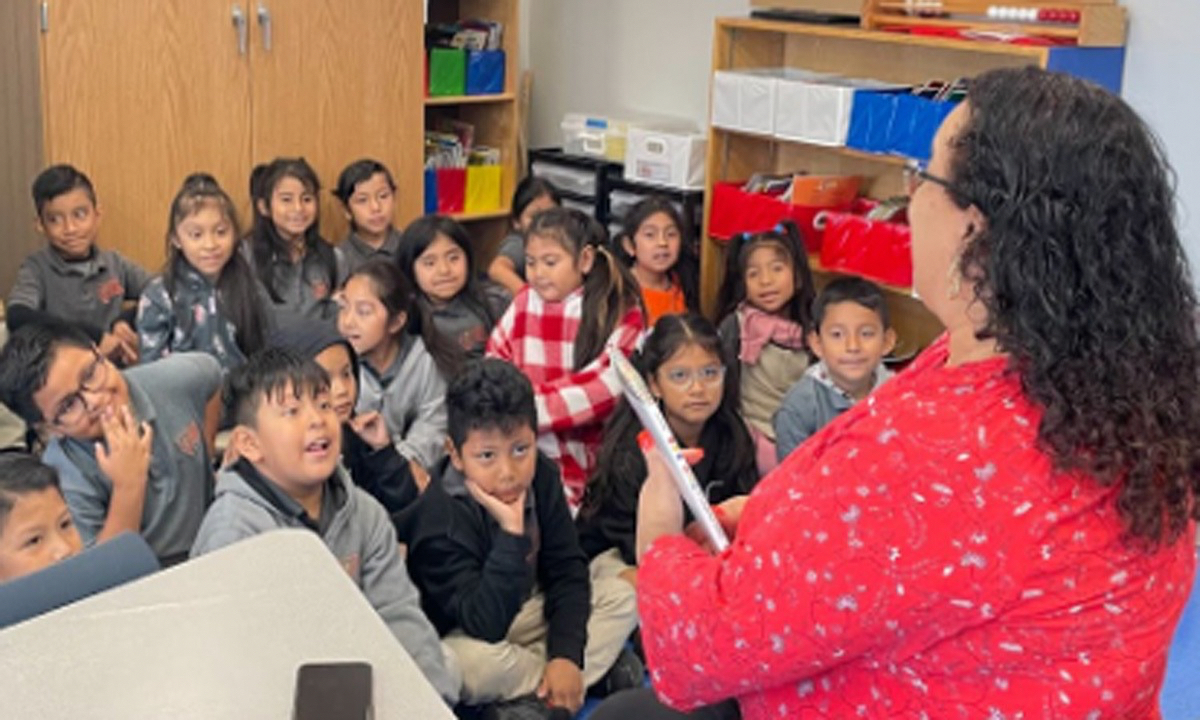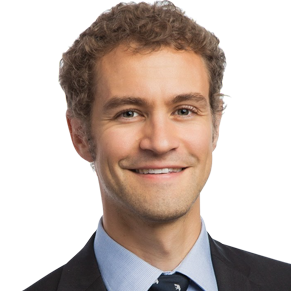In Los Angeles, a Teacher Residency Program Creates Bilingual Teachers
Compared to California’s students, the state’s teachers are disproportionately whiter and more monolingual.

Get stories like this delivered straight to your inbox. Sign up for The 74 Newsletter
George Lee, a third grade teacher at Camino Nuevo Charter Academy, speaks with the confident enthusiasm of someone who is where he belongs.
“I’m teaching in a neighborhood that I grew up in,” said Lee. “I’m really a part of this community, like, I have more of an obligation as an educator to really serve the individuals that I’m working with. I think that’s what connected me with families more so it helped me be more involved with other curriculums around the school.”
This matches the campus mission. Camino Nuevo — “New Way” in English — is a school tailored to its diverse, polyglot community’s needs, but it’s probably better understood with the operational arrow inverted: This is a school that exemplifies and expresses that community and its aspirations.
Its Burlington campus, in Central Los Angeles, is just west of downtown in a vibrant, plural area bursting with linguistic and cultural assets. Lee, a child of Peruvian Chinese immigrants, grew up nearby speaking Spanish, English, and (some) Cantonese. The large majority of Camino Nuevo students identify as Latino and come from families where Spanish and/other non-English languages are spoken.
Perhaps it’s no surprise, then, that Burlington — the flagship campus of Camino Nuevo’s LA charter schools network — would host a pioneering response to California’s persistent shortage of bilingual teachers. After all, Camino Nuevo-Burlington served as a bilingual redoubt during California’s 18 years of mandating English-only instruction. Only a small number of schools were able to secure waivers from the policy and keep bilingual education’s fire burning in the state.
When that mandate was lifted in 2016, schools across the state began the arduous task of returning non-English languages to their campuses. Or, put better, they started working on bringing those languages to the front of classrooms — the linguistic diversity of California’s students had persisted through its decades as an English-only state. In 2023, over 40 percent of California school-aged children spoke a non-English language at home, and the number is much higher in the early years.
At Burlington, around 70 percent of students are currently classified as English learners — and that number does not include former English learners who have reached proficiency in English but also speak other, non-English languages.
Despite this abundant multilingualism, California schools and districts have struggled to regrow their bilingual programs in the past eight years. Asked why they’re struggling to overhaul their English-only classrooms, school leaders here almost universally raise the same challenge as their peers around the country: they can’t find enough bilingual teachers.
Compared to California’s students, the state’s teachers are disproportionately whiter and more monolingual. Just 27 percent of California teachers speak a non-English language at home. Over 60 percent of California teachers are white, compared to just 22 percent of California students.
“Post-pandemic, we realized that we had to do something about this because we had teachers leaving and there were no new teachers coming in,” says Camino Nuevo leader Adriana Abich.
How can this be? Why is it so hard for California, of all places, to build a bilingual teaching force that reflects the burgeoning linguistic diversity of its student population?
Above all, it’s because teacher training pipelines and state credentials — in California and in most states — are inflexible, expensive, and largely designed for monolingual teacher candidates.
“In California, there’s so many layers to becoming a teacher, [particularly] a lot of testing” says Camino Nuevo principal Juliana Santos. “We’ve lost some wonderful, high-quality teachers because they couldn’t pass those tests.”
To get a teaching license in California, young adults first need to complete a bachelor’s degree, in a state where in-state tuition and fees average over $45,000 at four-year public colleges and universities, and room and board charges add thousands more. Most candidates then need to enroll in several additional years of training to get their preliminary teaching license — which often adds tens of thousands of dollars more in cost.
Teacher candidates must also complete 600 (generally unpaid) hours of student teaching and pass a battery of tests (in English) covering everything from knowledge of the U.S. Constitution to subject matter expertise and pedagogical methods. Further, to be eligible to teach in bilingual classrooms, candidates also need a bilingual teaching credential, which requires extra coursework and successful passage of additional language exams.
These various requirements often serve as diversity filters, blocking bilingual teacher candidates who cannot easily pay for years of coursework, multiple testing fees, and many months of unpaid student teaching. Even those bilingual candidates who are able to clear these financial obstacles may be filtered out by the necessity of passing multiple teacher credentialing assessments in English — even though there is overwhelming demand for their abilities to work and teach in Spanish or another non-English language.
Perhaps worst of all, there is little research suggesting that these credential requirements reliably produce higher quality instruction — in English-only or bilingual classrooms — let alone better academic outcomes for students.
Since it couldn’t find the teachers it wanted post-pandemic, Camino Nuevo decided to train its own. Last fall, it partnered with a handful of local schools and Loyola Marymount University’s (LMU) School of Education to launch the AVANCE teacher residency program, with three dedicated residency pathways: bilingual, English-only, and special education.
“Basically, it’s a program to disrupt the typical approach [to teacher preparation], where you don’t get paid for work. You sit side by side with a master teacher and you learn as a student teacher,” Abich says. “My main thought was, ‘How do we make it work for people of color? How do we make it so that, number one, people are getting a living wage when they come and do a residency with us?’”
To that end, AVANCE residents’ daily work counts towards their required student teaching hours. Unlike most student teachers, they receive a salary — along with tuition stipends and payments to cover testing fees — for a total compensation package of nearly $50,000. In return, residents work with students alongside mentor teachers at one of the participating schools’ campuses (their mentors also receive a stipend for their participation).
While tuition costs at LMU are north of $32,000 per year, the University provides scholarships that reduce costs by roughly half — and AVANCE provides an additional scholarship that brings the total cost down to $8,000 (or $10,000, if they are seeking a special education credential). State-sponsored scholarship programs for teachers can further reduce costs, provided that residents go on to spend at least four years in the classroom once they earn their teaching credential.
During their residency year, AVANCE participants take coursework both online and in person as a cohort, studying trauma-informed pedagogy and weekly coaching sessions to give them practical guidance for their specific roles — in bilingual education and/or special education. “These are our way of saying, ‘this is the reality of the theory you’re hearing about in your classes,” Abich says. “This is the real stuff.”
To ensure that candidates can get over the state’s testing hurdles for teacher credentials, AVANCE residents also receive free test preparation materials through a partnership with Study.com.
As it launches its second year, it appears that the program’s blend of support and flexibility is meeting its goals. Across the first two cohorts, 97 percent of AVANCE residents identified as BIPOC. Nearly 70 percent of the first cohort are already leveraging their language abilities to launch careers as lead teachers in Camino Nuevo’s bilingual classrooms, and another 24 percent are on track to take on lead roles once they complete their final credential requirements.
In a state starving for bilingual teachers, high-support, low-cost residencies like AVANCE could be a policy camino worth exploring. The key, Abich thinks, is to design these programs with teacher candidates’ specific strengths and challenges in mind.
In Camino Nuevo’s case, she says, “We were focused on our community. We wanted people from the community to be in those teacher roles.”
Get stories like these delivered straight to your inbox. Sign up for The 74 Newsletter

;)
